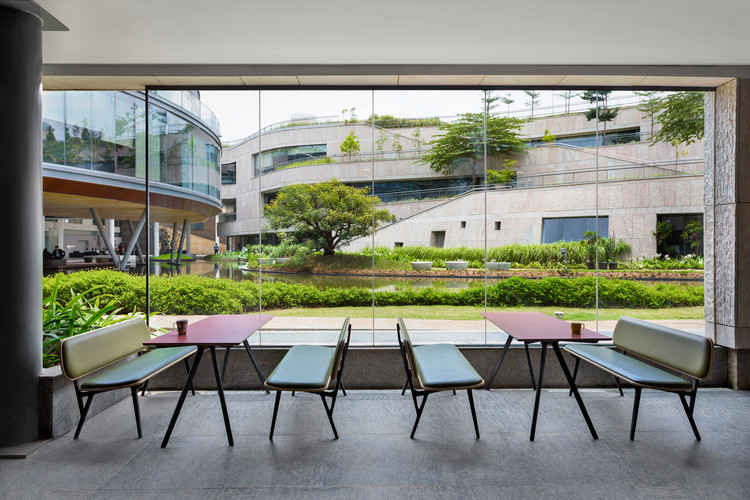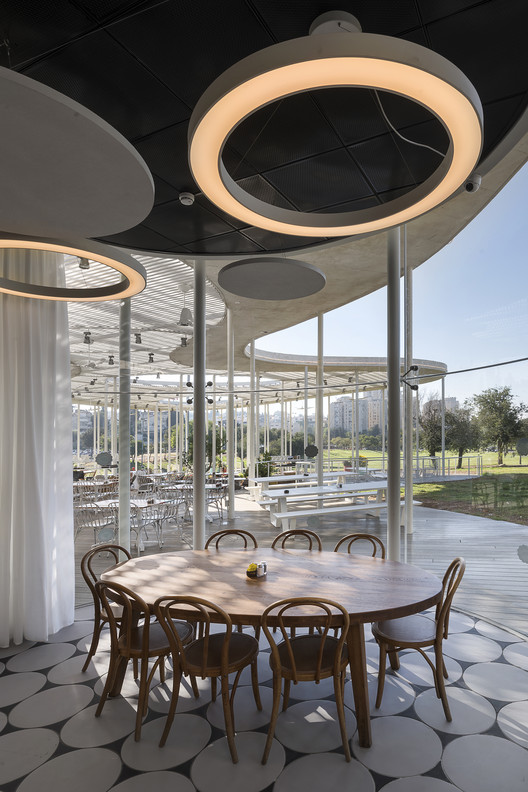The Chazen Museum of Art Machado and Silvetti Associates
2013-08-07 01:00
架构师提供的文本描述。从项目的早期阶段,目标一直是创造一个强大的物理联系和持续感,从现有的博物馆到补充。在这个初始概念的基础上,另外两个非常重要的项目重点是从外部到内部的连接,以及从加载项的入口层到主画廊层的连接。
Text description provided by the architects. From the project’s earliest stages, the goal has been to create a strong physical connection and sense of continuity from the existing museum to the addition. Building on this initial concept, two other very important relationships that have been a focus of the project are the connection from outside to inside and from the addition’s entrance level to its main gallery level.
现有的博物馆和新增的画廊之间的连接是一个三层的桥式画廊,从现有的建筑到新的建筑创造了强大的物理连接或连续的画廊空间流动。这座桥及其外部包层/材料结构正在调查之中,以统一博物馆的南外立面,并作为通往校园的独特门户。
The connection between the existing museum and the addition is a bridge gallery at the third-floor level creating a strong physical connection or continuous flow of gallery space from the existing building to the new. The bridge and its exterior cladding/material construction are being investigated to both unify the south façade of the Museum and serve as a unique gateway to the campus.
与第三层的连续波段不同,第一层和第二层是由一系列的“盒子”组成的项目,并从它下面退却。他们的材料表现被认为是不同的第三层,包括青铜/铜板,板状混凝土,和玻璃。加盟商的立面的目标是在它能够负担得起的领域,比现有的外立面更加透明和吸引公众。作为这方面的一个例子,公共大厅由一个两层高的大玻璃卷组成,它面向的是东校园购物中心的一部分将是一个重要的庭院空间,从步行街和大学大道都可以看到自己和新的博物馆入口。
In contrast to the third level’s continuous band, the first and second levels are composed of a series of “boxes” that project and recede from beneath it. Their material expressions are conceived to be distinct from the third level, comprised of bronze/copper plate, board-formed concrete, and glass. The addition’s façade aims to be far more transparent and inviting to the public than its existing counterpart in areas where it can afford to do so. As an example of this, the public lobby consists of a large two-story glass volume that orients itself towards what will be a significant courtyard space along a portion of the East Campus Mall, making itself and the new museum entrance visible from both the pedestrian mall and University Avenue.
附加的主要公共楼梯集中在大厅。它的定位和开放创造了一个强有力的关系入门级和主画廊水平。楼梯是由一块连续的石板形成的,它被认为是一块不间断地运行、攀爬和折叠的石头“地毯”,用来创造、定义和连接许多不同的外部和内部元素和空间。铜覆盖的显示器构成了附加的屋顶景观,并有助于为所有永久画廊和阁楼在第三层的自然光。它们在孔径大小和材料选择上借鉴了现有博物馆的经验,然而,它们的形式和技术结构却是以一种新的、创新的方式来思考的。
The addition’s main public stair is centered in the lobby. Its orientation and openness create a strong relationship between the entry level and the main gallery level. The stair is formed by a continuous band of stone veneer, which is conceived of as a stone “carpet” running uninterrupted, climbing and folding to create, define, and connect a number of different exterior and interior elements and spaces. Copper-clad monitors make up the addition’s roof-scape and help bring natural light to all of the permanent galleries and the mezzanine gallery at the third level. They take their cues from the existing museum with respect to their aperture size and material choice; however, their form and technical construction are thought of in a new and innovative way.
 举报
举报
别默默的看了,快登录帮我评论一下吧!:)
注册
登录
更多评论
相关文章
-

描边风设计中,最容易犯的8种问题分析
2018年走过了四分之一,LOGO设计趋势也清晰了LOGO设计
-

描边风设计中,最容易犯的8种问题分析
2018年走过了四分之一,LOGO设计趋势也清晰了LOGO设计
-

描边风设计中,最容易犯的8种问题分析
2018年走过了四分之一,LOGO设计趋势也清晰了LOGO设计
















































































